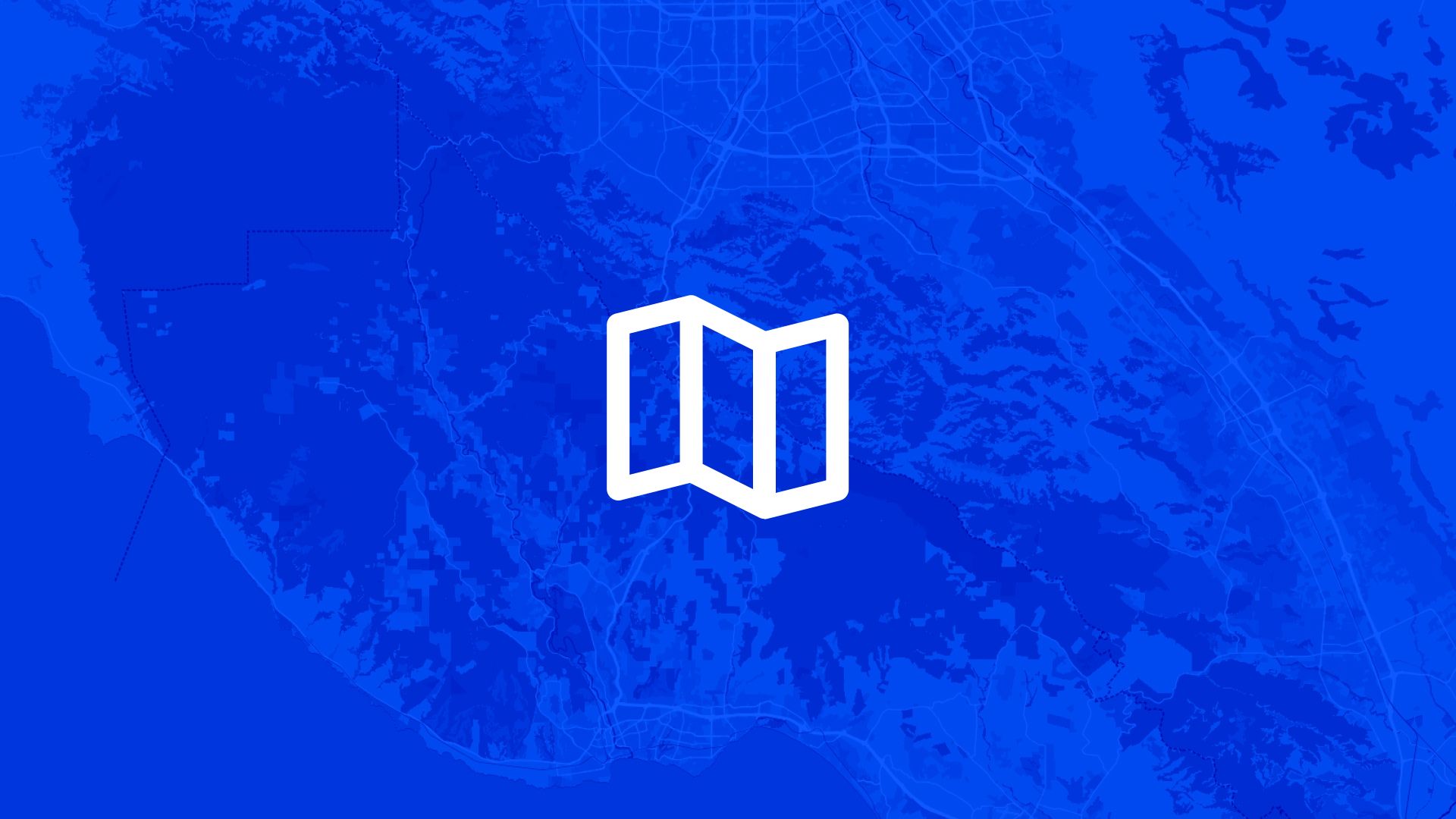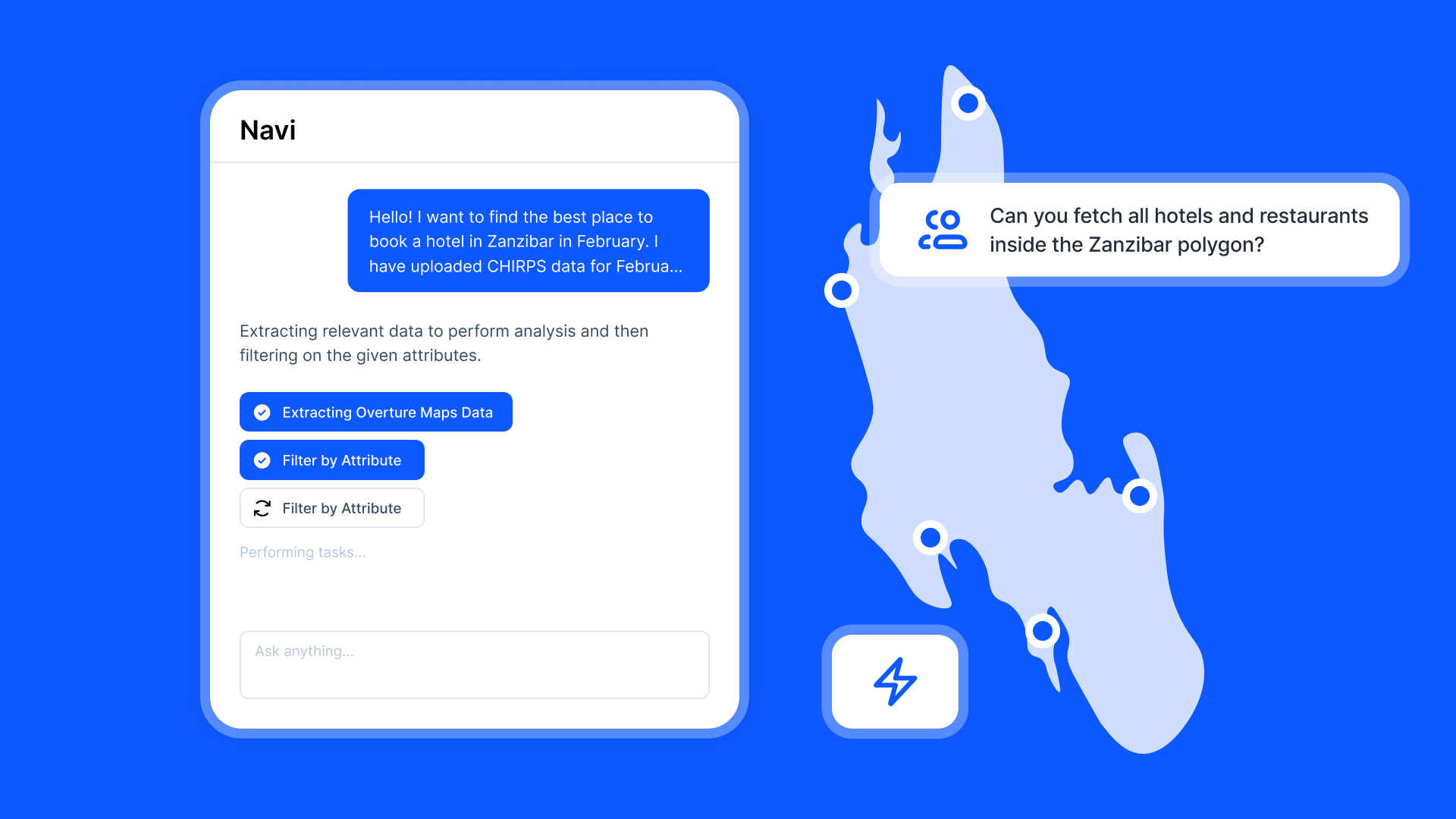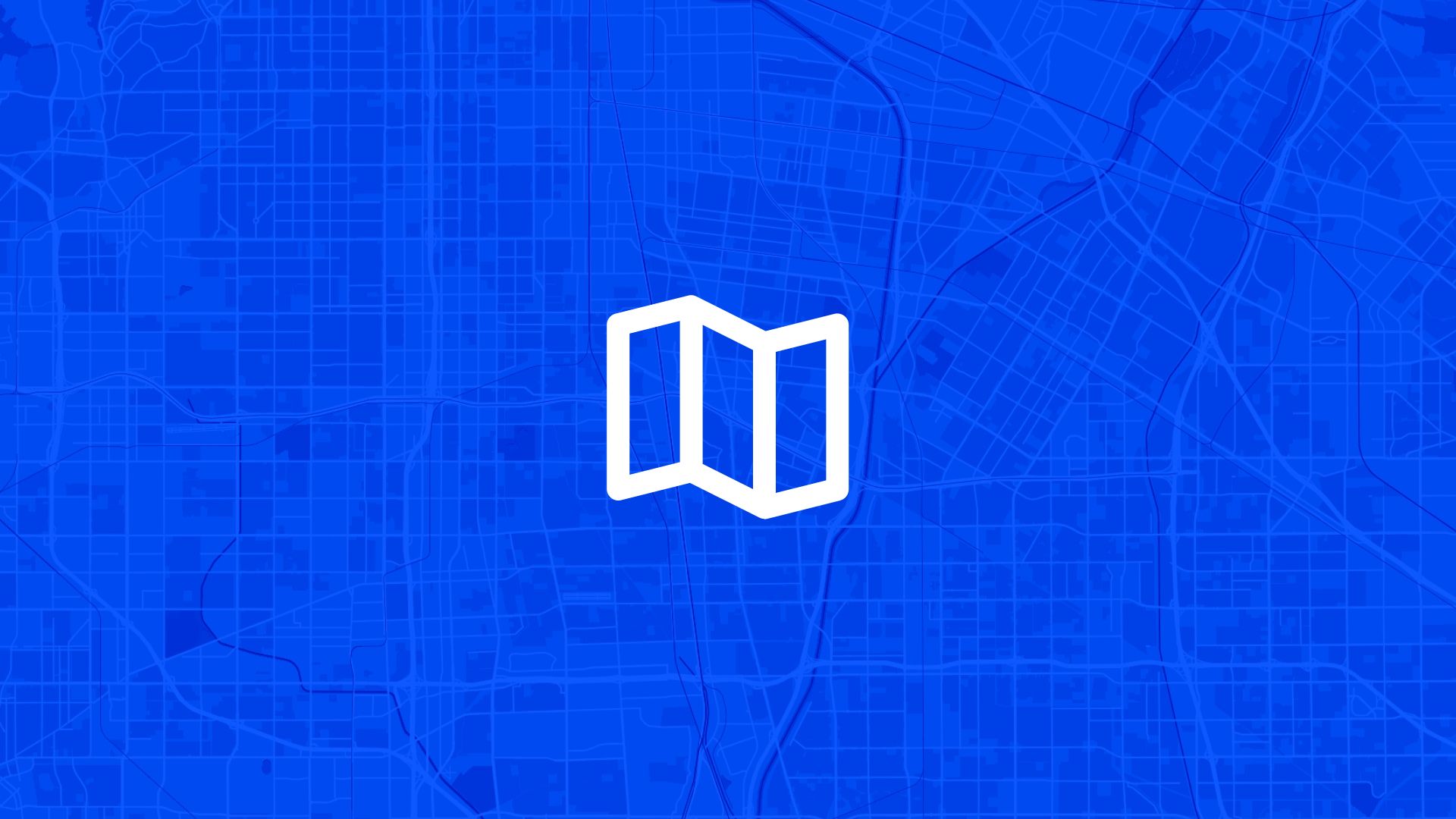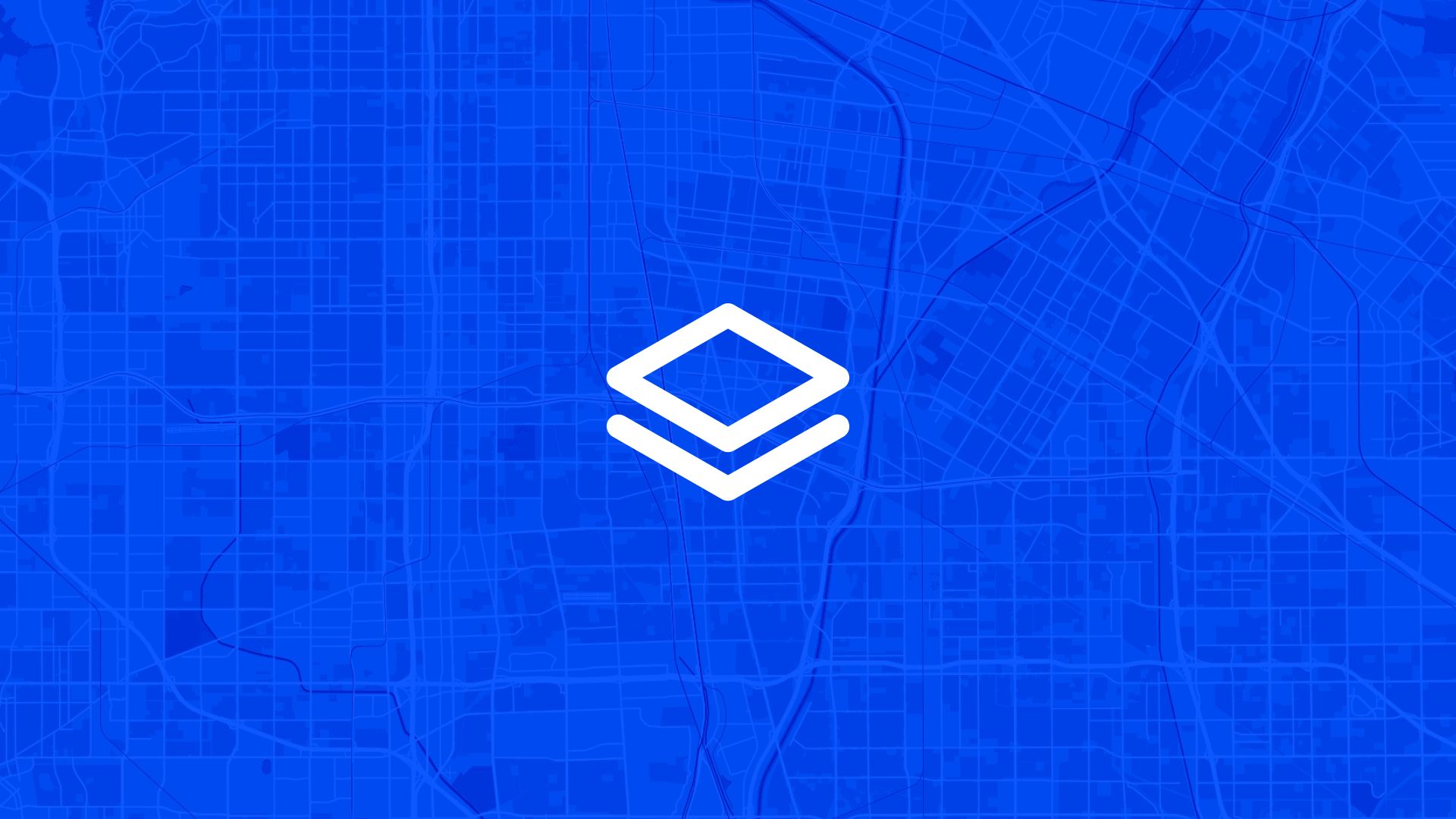Planning solar projects starts with one big question: where’s the sun?
Before you get into land negotiations, permits, or interconnection studies, you need to know if the area you're looking at even gets enough solar energy to make a project worth it.
That’s where solar potential maps come in. They help you screen large regions and quickly find where the opportunity lies.
In Atlas, you can map solar potential with just a few clicks. You import solar irradiance data, overlay it on your target area, and instantly see where to focus. No GIS experience needed.
Here’s how to do it.
Why Solar Potential Mapping Matters
Every solar project lives or dies by the sun. But solar radiation isn’t the same everywhere. Even within the same country or state, one area might get 20% more sunlight than another.
That’s a big deal when margins are tight and every kilowatt-hour counts.
It’s a simple way to narrow the field—before you go deep.
Step 1: Get Solar Irradiance Data
First, you need solar data.
There are several reliable sources for this:
- Global Solar Atlas by the World Bank
- NASA’s POWER Data
- PVGIS (EU-focused)
- National energy agencies in many countries
Most sources offer downloadable data in formats like GeoTIFF, which Atlas supports.
Pick the right dataset for your region and download the file. Look for long-term averages (e.g. 10+ years) of Global Horizontal Irradiance (GHI) or Direct Normal Irradiance (DNI) depending on your project type.
Also read: How to Overlay Wind Data on a Parcel Map
Step 2: Import the Solar Data into Atlas
Once you have the file, it’s easy to get it onto the map.
- Open your project in Atlas
- Go to Data Uploads
- Upload the GeoTIFF or raster file
- Atlas will process the file and add it as a new layer
Now the solar potential data is on your map, ready to be styled and explored.
Step 3: Style the Layer for Clarity
By default, raw raster data isn’t easy to read. You’ll want to make it visual.
Here’s how:
- Open the layer settings
- Choose Color Range styling
- Set value breaks (e.g. red for >2200 kWh/m²/yr, yellow for 1800–2200, blue for <1800)
- Adjust the opacity to about 60% so you can see other layers below
- Add a legend if you're sharing the map
Now your map shows exactly which areas have strong, average, or weak solar potential.
Step 4: Overlay Your Target Region or Boundaries
To use the map effectively, you’ll need a reference shape.
You can:
- Upload shapefiles or GeoJSON of admin regions, land parcels, or project zones
- Draw custom polygons directly in Atlas
Name your boundary layer so it’s clear what you’re looking at (e.g. “Proposed Region”, “West Pipeline Zone”).
This lets you visually compare solar potential within your actual areas of interest.
Step 5: Analyze and Compare Regions
Now comes the best part—using the map to make decisions.
Click inside your regions to see the irradiance value. Use the Query Tool to sample different areas or get exact values. You can also:
- Run summary stats like average or max irradiance
- Use filters to find only parcels above a certain solar threshold
- Export region data with solar values attached
This lets you turn big areas into shortlists—based on solar potential, not guesswork.
Step 6: Share or Export the Results
Atlas lets you share the outcome without exporting images or juggling PDFs.
You can:
- Create a live map view with layers turned on and styled
- Generate a share link for clients or partners
- Export a PDF, image, or data file for reporting
Everyone stays on the same page—whether they’re in your office or on the other side of the world.
Why Teams Use Atlas for This
Solar potential mapping is just one part of site search, but it’s an important one.
Atlas is used by renewable developers, consultants, investors, and land teams to do exactly this:
- Screen regions based on solar radiation
- Compare parcels at scale
- Combine solar data with grid, land, zoning, and flood info
- Make better calls—faster
The main benefit? You can do it all from your browser, no heavy tools or GIS training needed.
Site Search and Evaluation with Atlas
Like most GIS platforms, Atlas can help you look at maps. But when it comes to site search and evaluation, Atlas goes much further.
It’s built specifically for people who need to spot the right land, fast.
Whether you’re scouting for renewable energy projects, industrial expansions, new retail locations, or land investment opportunities—Atlas gives you the tools to compare parcels, overlay key data, and share results with your team.
This isn’t just about seeing what’s on a map. It’s about making a decision.
Let’s break down how Atlas helps you find and evaluate sites more efficiently.
Bring Your Own Data or Start From What’s Built In
Sometimes you already have a list of parcels. Other times you’re starting from scratch.
Atlas works well in both cases.
Upload a CSV with parcel data, or drop in shapefiles from your GIS team. You can also use drawing tools to sketch out potential sites manually. Each shape becomes a layer you can click, label, and filter.
But if you don’t have data, no problem.
Layer Key Data to Evaluate Site Potential
This is where Atlas stands out.
Instead of flipping between different platforms to compare slope, access, zoning, and flood risk—you just layer it all on the same map.
You can:
- Add flood zone shapefiles
- Import elevation and run Slope Analysis
- Draw buffers around power lines or roads
- Overlay wind speed rasters and compare to parcels
- Tag constraints like wetlands or protected areas
Each layer is styled visually—so you can color, label, and toggle visibility depending on what you need to see.
That means less time guessing, and more time seeing.
Also read: Best Way to Map Flood Risk for Development
Style, Filter, and Compare Sites Fast
Atlas makes it easy to surface the parcels that matter.
Need to find all land within 1km of a substation and outside the flood zone and with a slope under 10%?
No problem.
You can filter by overlap, intersect layers, or use visual styling (like heatmaps or range coloring) to compare sites at a glance. This helps you narrow down dozens or hundreds of parcels into a shortlist—based on your actual criteria.
It’s the kind of analysis that would take hours in traditional GIS tools. In Atlas, it’s built in.
Save Views, Share Maps, and Move Quickly
Once you’ve identified viable sites, you don’t want to waste time copying screenshots into slides.
Just share a live map.
Atlas lets you save views with specific layers turned on, annotate them with labels or comments, and export the results as PDFs, images, or shareable links. Your team sees exactly what you see.
Clients, engineers, or investors can explore the map in real-time—without needing a login or software.
Real Teams Use It This Way Every Day
Atlas is used by solar developers, land acquisition teams, consultants, and manufacturers across industries.
They’re using it to:
- Evaluate wind and solar potential
- Compare parcels for land deals
- Screen out sites with slope, flood, or zoning issues
- Plan for infrastructure access
- Report site findings to partners and clients
In short, if your job involves picking land or comparing locations—Atlas makes it easier.
Smarter Site Search Starts with the Right Tools
You don’t need to be a GIS expert to evaluate land like one.
Atlas takes the tools that used to be hidden behind complicated software and makes them available right in the browser.
So whether you’re screening 10 parcels or 1,000, you can see the data clearly, layer what matters, and share results in minutes—not days.
Flood zones? Check. Slope? Done. Proximity to grid? Covered. Team visibility? One link.
That’s what modern site evaluation looks like in Atlas.
Boost Your Workflow with the Right Tools
Site planning moves fast. Whether you're checking slope, flood zones, proximity to power lines, or wind potential—speed and clarity matter.
Atlas gives you both.
In this article, we covered how to map solar potential, but that’s just one of many things you can do with Atlas.
From overlaying data to running analysis, styling layers, and sharing maps with your team, Atlas makes complex site evaluation tasks simple and visual. All from your browser. No GIS experience needed.
So whether you're screening parcels, comparing risk, or narrowing down locations, Atlas helps you move from "just looking" to "let’s go" faster.
Sign up for free or book a walkthrough today.





